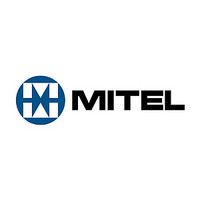vp520s Mitel, vp520s Datasheet - Page 3

vp520s
Manufacturer Part Number
vp520s
Description
Pal/ntsc To Cif/qcif Converter
Manufacturer
Mitel
Datasheet
1.VP520S.pdf
(16 pages)
from the vertical reference input ( VREF). The user can choose
the number of transitions of the HREF input which must occur,
after VREF has gone active, before starting the filter opera-
tion. Data is then not written to the DRAM until after the
pipeline delay through the filters.
video, which can be selected by the FREF input or internal
logic. A bit in Control Register 1 ( Internal / External Field
Detect ) determines which option is to be used. An additional
Field Select Bit determines whether the field selected should
correspond to FREF being high or low. When the Field Select
Bit and the input are at the same logical level then that field is
used. Note that FREF transitions must be coincident with
active going VREF transitions.
1 ) in which VREF goes active in less than half a line period
after the HREF input last went active.The half line period is
determined by VREF going active between 1 and 432 CREF
qualified SCLK edges after HREF went active (1-429 in NTSC
mode). Note that coincident VREF and HREF edges will
indicate this field on the first CREF qualified SCLK edge.
Internal / External Field Detect Bit is low. Field 1 is selected
when the Field Select in Control register 1 is low, and Field 2
is used when the bit is high.
fields are actually used. External logic is assumed to switch
between two sources of video, one for each field. The internal
DRAM address generator is modified such that half area
pictures from the centre of each source are actually stored as
CIF/QCIF data. The first line used in each field will be 72 line
delays in addition to the number which has been defined by the
user. The split screen option is not supported in the QCIF
mode of operation, and a reset is needed after a mode change
in CIF.
vertical blanking. This ensures that all the filter accumulators
are cleared and the edges of the picture are correctly proc-
essed. The horizontal filters always give the required results
since four decimated values are ignored at either side of the
picture.
which will be shifted if the filter coefficients are not chosen to
exactly give a gain of unity. A Control Bit is thus provided,
which when set causes 16 to be subtracted from incoming
The first video line to be filtered and stored will be derived
The VP520S only expects to use one field of CCIR601
Internal logic is provided which determines the field ( Field
In the Split Screen mode this logic is overridden, and both
The VP520S will insert zero's into the line delays during
Incoming luminance data could have a black level of 16,
This logic is used, rather than the FREF input, when the
SYSCLK
DATA
MCLK
REQYUV
O/P
O/P
FSIG
O/P
I/P
20ns
max
33ns min
Stays high for 11440 (NTSC) or 13284 (PAL) SCLKs if REQYUV not received
10ns
min
Fig 3 : Macroblock Output Timing
2ns
min
20ns max
60 SYSCLK Max , 10SYSCLK Min
20ns max
luminance. A black level of zero will then stay as zero through-
out the filter operation. At the output of the filters 16 is always
added to the results, regardless of the state of the Control Bit.
Saturation logic ensures that these addition / subtraction
operations do not produce negative results or values greater
than 254.
difference inputs and true Cr Cb chrominance values. Cr Cb
values are 8 bit positive only numbers, with black levels of 128.
These must be converted to two's complement signed num-
bers by subtracting 128, thus giving a black level of zero
through the filters. The outputs of the filters are always
converted to positive only Cr Cb values by adding 128 to the
results, regardless of the state of the Control Bit.
COPING WITH SYNC JITTER
of a composite video decoder which does not produce a line
locked clock, it is necessary to use an external FIFO line
buffer. For this reason the VP520S supports a system in which
external line buffer writes are controlled by the video source
and line reads are controlled by the VP520S. The VP520S in
the decode loop is assumed to be supplying sync to the
VP520S in the encode loop, but the sync generator must be
reset at the start of a frame to be in step with the video source.
Two pins have been supplied to support this situation, namely:
VRST - pin 34, and FRST - pin 36. The falling edge of VRST
(frame start identifier) when FRST (field identifier) is low
identifies the start of the frame. These two inputs can typically
be supplied by the Brooktree Bt812 Composite Video De-
coder. Note that Host Address 3 must be programmed with
the value 02 Hex to enable the reset operation.
CIF/QCIF MACROBLOCK OUTPUTS
format, the device raises a flag when a frame of data is ready
for reading from the frame store ( FSIG ). The FSIG pin is
automatically configured as an output in the decimate mode,
but will only stay active (high) for the time given in Figure 3. If
a Request Macroblock response (REQYUV) is not obtained
during this period, then FSIG will be taken low and the frame
of data presently available will be ignored. It will go high again
when a new frame of data is available.
A Control Bit is also provided which selects between colour
When input syncs to the VP520S have jitter, due to the use
When producing decimated CIF/QCIF data in macroblock
20ns max
First O/P Valid
O/P Valid
20ns max
VP520S
3












